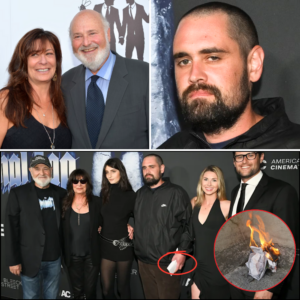In a blockbuster move that could redefine global connectivity, SpaceX announced on September 8, 2025, its acquisition of key wireless spectrum licenses from EchoStar Corporation in a transaction valued at approximately $17 billion. The deal, which includes $8.5 billion in cash and $8.5 billion in SpaceX equity, grants SpaceX ownership of EchoStar’s AWS-4 and H-block spectrum assets—50 MHz of nationwide mid-band and low-band frequencies ideal for mobile satellite services. This strategic purchase is poised to accelerate the expansion of Starlink’s direct-to-cell (D2C) technology, enabling seamless texting, calling, and data access for unmodified smartphones in remote and underserved regions worldwide. For Elon Musk’s SpaceX, the acquisition marks a pivotal step toward eliminating mobile dead zones, while providing EchoStar with much-needed financial relief amid regulatory pressures and competitive challenges.
The announcement sent shockwaves through the telecom and satellite industries. EchoStar’s stock surged 19% in early trading on the Nasdaq, reflecting investor optimism about the company’s path forward. SpaceX, already a dominant force in low-Earth orbit (LEO) satellite broadband with over 6,000 Starlink satellites in orbit, views this spectrum as the key to unlocking next-generation D2C capabilities. “This acquisition will allow us to develop and deploy a revolutionary Starlink Direct to Cell constellation with more than 100 times the capacity of our first-generation satellites,” SpaceX stated in a press release. The move comes at a time when global demand for ubiquitous connectivity is surging, driven by everything from disaster response to rural economic development, positioning Starlink not just as an internet provider but as a comprehensive mobile ecosystem.
The Genesis of the Deal: From FCC Scrutiny to Strategic Alignment
The path to this $17 billion pact was anything but straightforward, weaving together regulatory arm-twisting, financial necessities, and visionary ambition. EchoStar, the Englewood, Colorado-based satellite and wireless operator best known for its Dish Network and Boost Mobile brands, has long held a treasure trove of underutilized spectrum licenses. Acquired over the past decade, these assets—including the AWS-4 band (around 2.0-2.2 GHz) and H-block (around 1.9 GHz)—were earmarked for advanced 5G and satellite-mobile hybrid services. However, EchoStar’s rollout lagged, hampered by mounting debt (over $20 billion as of mid-2025) and fierce competition from fiber optics and LEO constellations like Starlink.
The catalyst for the sale was a high-stakes inquiry launched by the Federal Communications Commission (FCC) in May 2025. Frustrated by delays in spectrum deployment, FCC Chairman Brendan Carr— a vocal advocate for faster 5G adoption—threatened to revoke EchoStar’s licenses if they weren’t put to productive use. SpaceX, ever opportunistic, filed complaints urging the FCC to intervene, arguing that hoarded spectrum stifled innovation in satellite-to-device tech. Sources close to the negotiations revealed that President Donald Trump personally intervened in late August, urging EchoStar CEO Charlie Ergen during a White House call to “unlock that spectrum for the American people.” Ergen, a telecom veteran with a history of bold bets, saw the writing on the wall.
Just weeks before the SpaceX deal, EchoStar offloaded $23 billion worth of mid-band spectrum to AT&T on August 26, 2025, resolving part of the FCC probe and infusing cash to service debts. The SpaceX transaction builds on that momentum, with EchoStar anticipating full regulatory clearance by early 2026. “For the past decade, we’ve acquired spectrum with the foresight that direct-to-cell via satellite would transform communication,” said Hamid Akhavan, EchoStar’s president and CEO. “This partnership with SpaceX combines our assets with their launch prowess to deliver innovative, economical service faster than ever.” As part of the agreement, SpaceX committed to $2 billion in direct cash interest payments on EchoStar’s debt through November 2027, providing immediate liquidity.
The deal also includes a long-term commercial pact: Boost Mobile’s 9 million subscribers will gain access to Starlink’s D2C service, allowing seamless satellite handoff in areas beyond terrestrial towers. This integration could boost EchoStar’s retention rates, especially in rural markets where Boost competes with T-Mobile and Verizon. For SpaceX, it’s a win-win—securing spectrum without full reliance on carrier partnerships like its ongoing T-Mobile beta, launched in 2024.
Starlink’s D2C Ambition: From Beta to Global Lifeline
At the heart of this acquisition is Starlink’s D2C vision: satellites beaming signals directly to standard LTE phones, no special hardware required. Since FCC approval in August 2024, SpaceX has launched over 400 D2C-enabled satellites, partnering with T-Mobile for U.S. trials. Early tests in 2025 demonstrated texting and emergency SOS capabilities during hurricanes in Florida and Louisiana, connecting millions who were otherwise isolated. “SpaceX’s first-generation Starlink satellites with Direct to Cell have already saved lives during natural disasters,” the company noted, citing instances where users messaged emergency responders from flooded zones.
The EchoStar spectrum elevates this from promising prototype to scalable powerhouse. AWS-4 and H-block frequencies are prime for hybrid terrestrial-satellite operations, offering low latency (under 100 ms) and broadband speeds up to 100 Mbps. SpaceX plans to deploy next-gen satellites with “step-change performance”—enhanced antennas, beamforming tech, and AI-optimized routing—targeting 100x capacity gains. This means not just texts and calls, but video streaming and IoT data for agriculture, mining, and maritime ops. Gwynne Shotwell, SpaceX president and COO, elaborated in a memo to employees: “Owning this spectrum frees us from leasing constraints, letting us innovate at warp speed. Imagine a farmer in rural India checking crop yields via satellite, or a ship captain navigating Arctic routes with uninterrupted 5G.”
Globally, the impact could be transformative. Over 3 billion people lack reliable mobile coverage, per World Bank data, with dead zones in Africa, Asia, and Latin America exacerbating inequality. Starlink’s D2C, powered by this spectrum, aims to bridge that gap. The deal includes global Mobile Satellite Service (MSS) licenses, enabling expansion beyond the U.S. Partnerships with carriers like Optus in Australia and Rogers in Canada are in the works, with full rollout eyed for 2027. Environmentally, SpaceX touts efficiency: LEO orbits reduce signal delay compared to geostationary rivals like HughesNet, while new solar-powered sats minimize carbon footprints.
Elon Musk’s Masterstroke: Telecom Titan in the Making
Elon Musk’s fingerprints are all over this deal, underscoring his relentless drive to disrupt legacy industries. Since Starlink’s 2019 debut, Musk has transformed it from a side project into a $200 billion valuation behemoth, with 4 million subscribers generating $7 billion in 2024 revenue. Acquiring spectrum outright—rather than leasing—mirrors his Tesla playbook: vertical integration to control the stack. “Spectrum is the new oil for connectivity,” Musk tweeted post-announcement, adding a meme of a satellite “moonwalking” over cell towers. Critics, including some FCC Democrats, decry the concentration of power, warning of a “Musk monopoly” on orbital assets. Yet supporters hail it as pro-competitive, with an FCC spokesperson praising the deals for “supercharging innovation and U.S. leadership.”
EchoStar’s Ergen, no stranger to high-stakes poker, emerges stronger too. The $17 billion infusion slashes debt by 40%, funds 5G upgrades for Dish, and cancels a $1.3 billion MDA Space contract for redundant satellites. “We’re putting customers first by partnering with the best in launch and ops,” Ergen said. Analysts project EchoStar’s EBITDA doubling by 2028, thanks to Boost-Starlink synergies.
Broader Ripples: A Seismic Shift in Telecom
This transaction reverberates across sectors. Telecom giants like Verizon and AT&T, fresh off their own mega-mergers (Verizon’s $20 billion Frontier buy in May), face stiffer satellite competition. Traditional towers become obsolete in remote ops, potentially slashing capex for rural builds. Investors are bullish: SpaceX’s private valuation could hit $300 billion post-deal, while EchoStar’s market cap climbed 25% in the week following. Venture funding for satcom startups surged 30%, per PitchBook, with players like AST SpaceMobile eyeing similar spectrum plays.
Regulatory hurdles remain: Antitrust review by the DOJ and international approvals could delay closing to Q2 2026. Geopolitical tensions add spice—China’s push for its own LEO net (Guowang) views Starlink as a strategic foe. Yet, if cleared, this deal cements U.S. dominance in space-based comms.
In underserved heartlands—from Appalachian hollers to Amazonian villages—Starlink’s enhanced D2C promises equity. A Montana rancher testing betas in 2025 reported: “I called my doc from 50 miles out—no bars before.” For disaster zones, it’s a game-changer; FEMA simulations show 90% faster response times with satellite handoff.
Musk’s SpaceX isn’t stopping here. Whispers of Mars D2C trials and quantum-secure links hint at bolder horizons. As Shotwell put it, “We’re not just connecting Earth—we’re future-proofing it.” This $17 billion bet on spectrum isn’t mere acquisition; it’s a launchpad for a connected planet, where dead zones are relics and every phone is a gateway to the stars.




